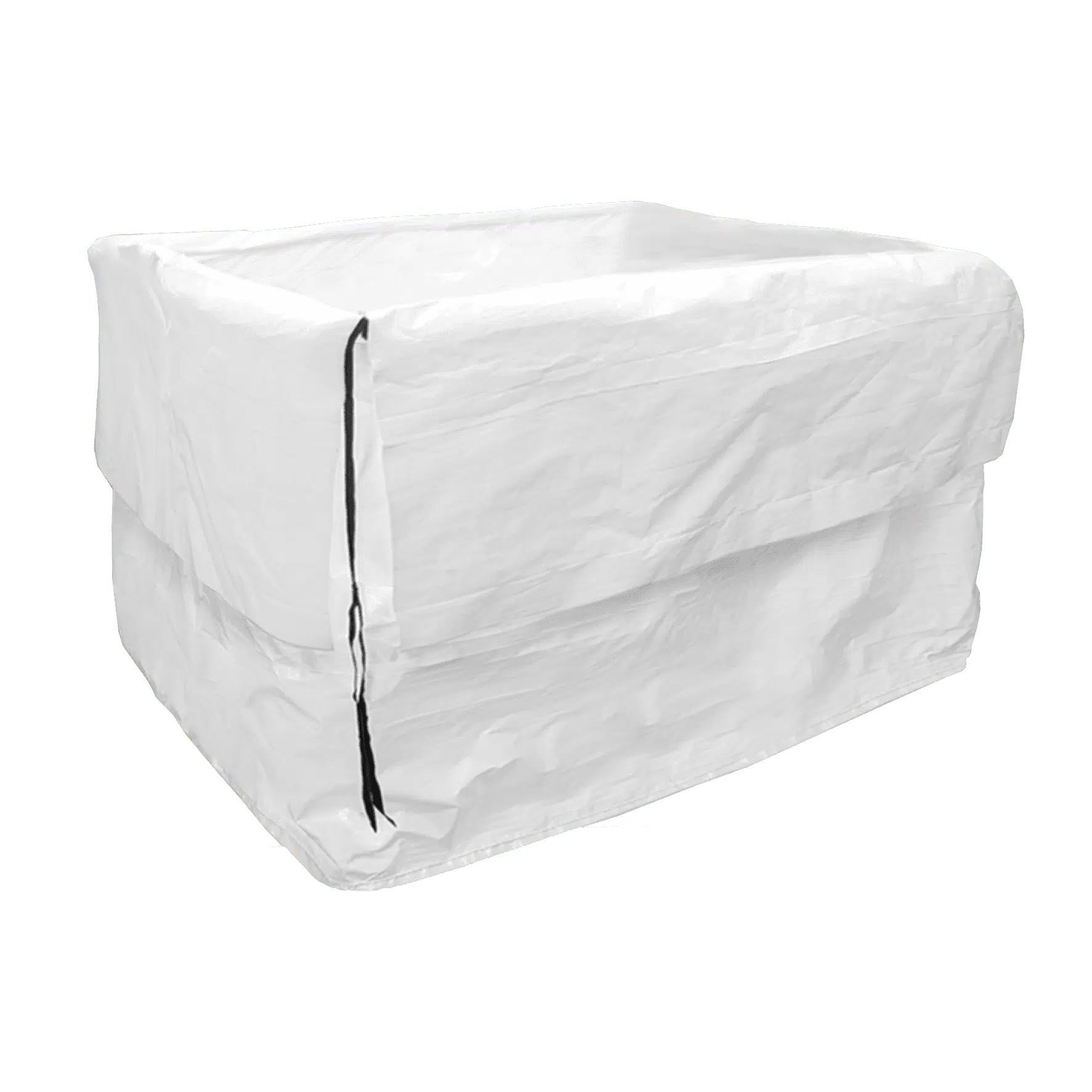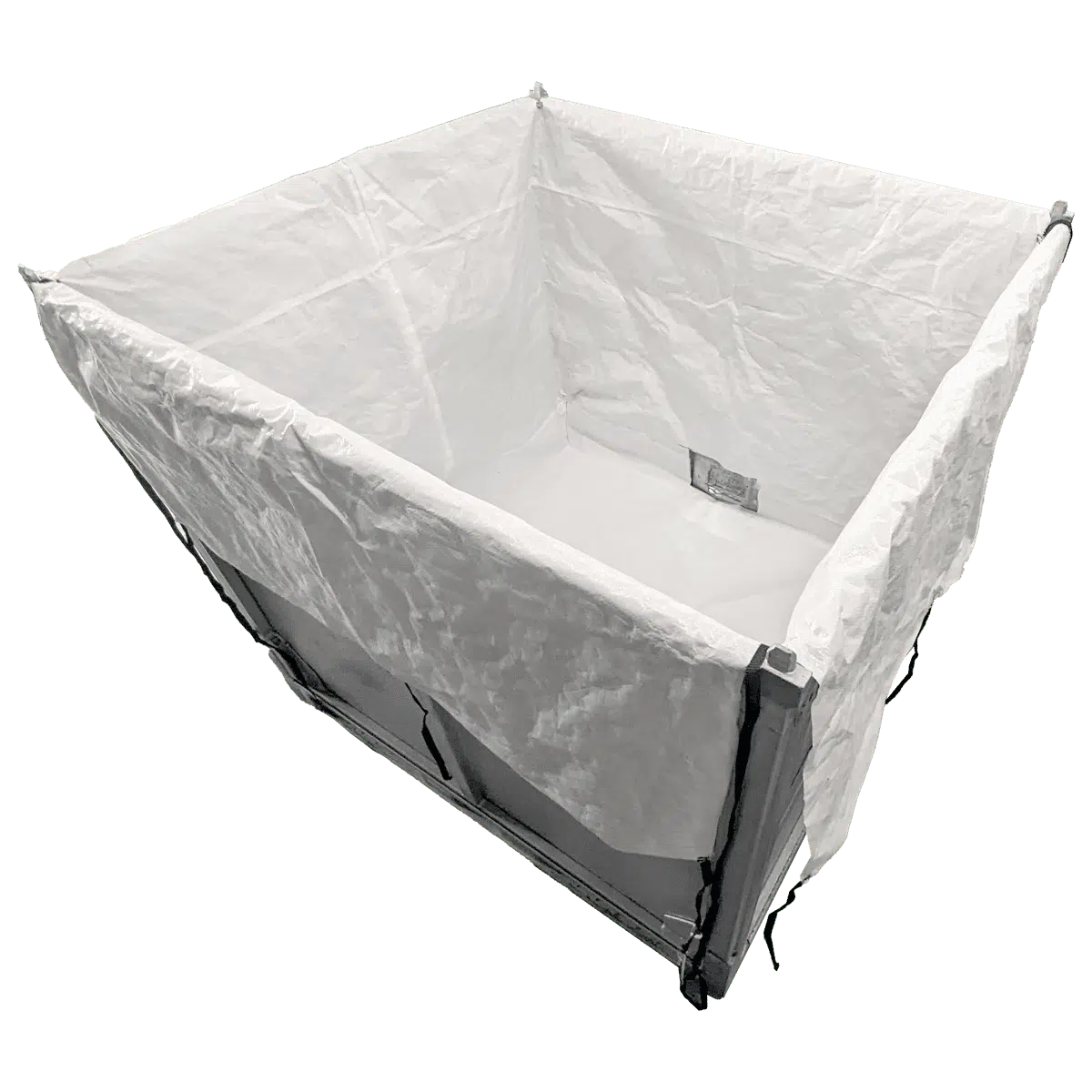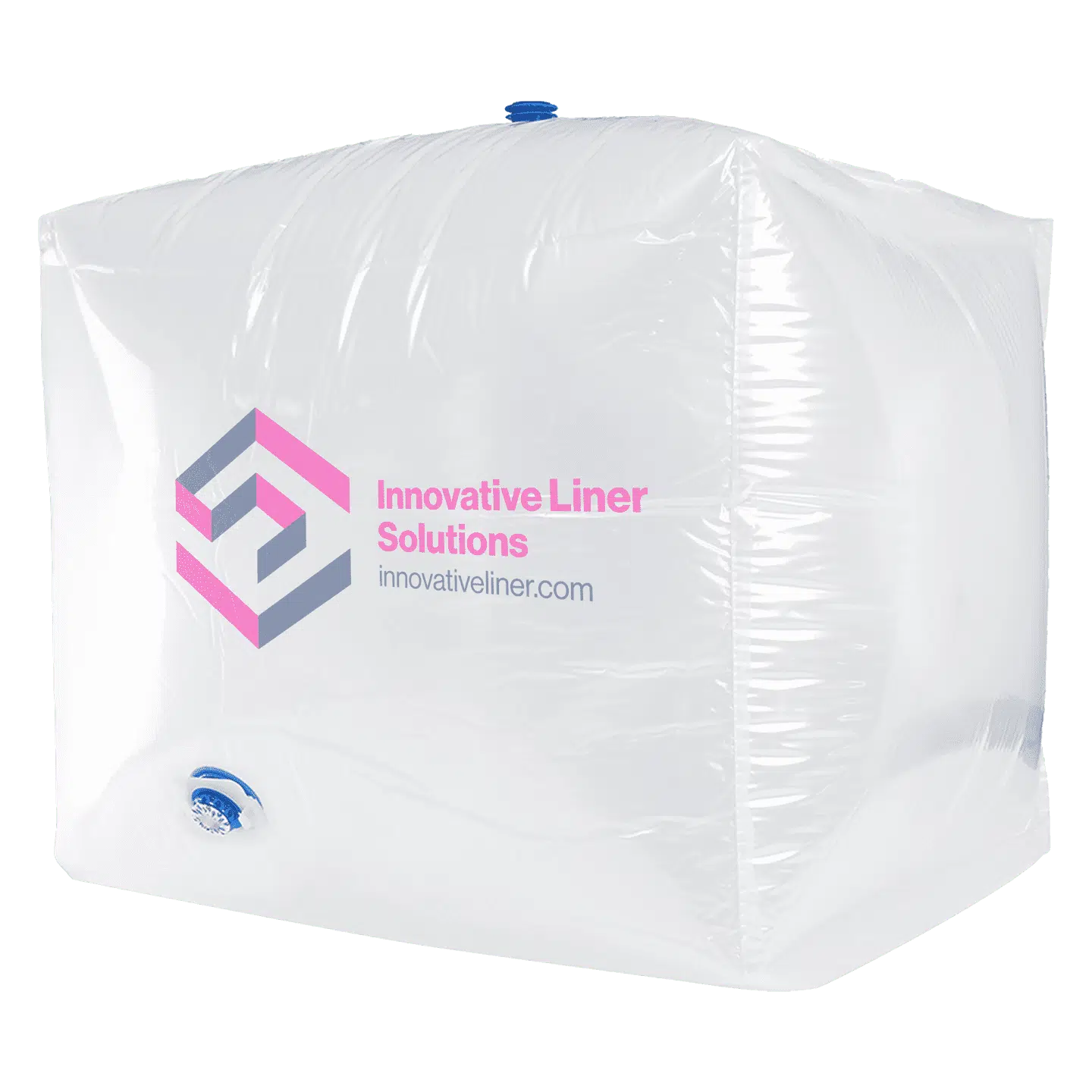Bulk liquid shipping requires careful attention to safety, cleanliness, and efficiency.
Intermediate Bulk Containers (IBCs) are one of the most effective tools for transporting large quantities of liquids, but the container itself cannot guarantee product integrity. Protective container liner solutions, along with other packaging components, provide the necessary safeguard against contamination, leaks, and damage during transport and storage. This page explores why protective liners are so essential, how they prevent contamination, and whether polypropylene liners can be used for both food and chemical applications. Along the way, it highlights the role of supporting IBC packaging materials that work together to create a complete protective system.

Why Do IBCs Need Protective Container Liners?
The design of an IBC makes it ideal for storing and transporting bulk liquids.
With a rigid outer shell and stackable form, they are efficient for logistics operations across industries. However, when liquids are poured directly into the container without protection, the risk of contamination and product loss increases significantly. Even the smallest exposure to residues or environmental particles can compromise product quality, leading to costly waste or safety concerns.

Creating a Barrier Against Contamination
A protective container liner provides a clean barrier between the liquid and the inner walls of the container.
This barrier ensures that no residue, bacteria, or microscopic particles from the container affect the product. By creating this separation, liners are able to maintain a sterile environment for sensitive liquids, prevent flavor transfer or odor retention, and protect against unwanted chemical reactions during storage or shipping.
Industries that benefit most from this protection include
Food and Beverage
Pharmaceuticals and Cosmetics
Chemical Transport
Supporting Reuse and Sustainability
Liners also make it easier to reuse IBCs by eliminating the need for extensive cleaning between uses. Instead of washing down the entire container, operators can replace the liner and keep operations moving. This approach saves time, conserves resources, and reduces labor costs.
Advantages of replacing liners instead of deep cleaning
Reduced downtime with faster turnaround between shipments.
Lower operational costs by cutting back on water and chemical use.
Improved sustainability through reduced energy and resource consumption.
These benefits help businesses meet both operational goals and environmental targets.
Enhancing Durability and Transport Safety
In addition to hygiene, protective liners strengthen the IBC itself. Liquids exert hydrostatic pressure in every direction, and without a liner this constant force can stress the walls of the container. Over time, this pressure increases the likelihood of cracks or leaks that can compromise both the product and the container. A polypropylene container liner absorbs and redistributes this pressure, helping to maintain the container’s integrity and extending its usable life.
Added safety during transit
Protective liners also reduce the risks associated with shipping. Containers in transit are exposed to vibration, stacking weight, and sudden movements during handling. Liners minimize the chance of spills and leaks that could damage other cargo, create environmental hazards, or place workers at risk. When paired with other IBC packaging materials such as IBC dunnage boards, IBC base pads, and IBC top lids, the liner becomes part of a complete protective system that reinforces every point of potential weakness.
Increasing Versatility for Multiple Products
Protective liners also increase the versatility of IBCs. A single container can be safely used for different products by changing out the liner between shipments. This flexibility reduces the need to keep separate inventories of dedicated containers, saving storage space and cost. For businesses that manage both food-grade and industrial liquids, liners make it possible to quickly switch between products without the risk of cross-contamination.
Key advantages of versatility
Allows companies to handle a broader range of products with fewer containers
Prevents mixing or residue issues between food-grade and chemical applications
Maximizes return on investment by extending the usability of every IBC
How Liners Work With Other IBC Packaging Materials
Protective liners do not operate alone. They are part of a complete system of IBC packaging materials designed to reinforce the container from every angle.
Each component addresses a different stress point in the container, ensuring that both the product and the container remain secure during handling, storage, and transport. When used together, these elements transform a basic IBC into a reliable solution capable of meeting the toughest demands of bulk liquid logistics.

The Role of IBC Dunnage Boards
IBC dunnage boards are essential for distributing the weight of liquid evenly throughout the container. Liquids naturally place pressure on the liner, and without proper support, stress points can form that may weaken the liner or cause it to stretch unevenly. Dunnage boards act like an internal support system, keeping the liner balanced and reducing wear.
Key Benefits of IBC Dunnage Boards
By managing the internal pressure, dunnage boards work hand-in-hand with the liner to create a safer shipping environment.
The Importance of IBC Base Pads
The base of an IBC is one of its most vulnerable areas. Constant contact with forklifts, pallets, and warehouse floors increases the chance of friction or damage. IBC base pads are designed to protect this critical area. They provide cushioning that reduces wear on the liner while stabilizing the container during handling.
Advantages of base pads
With base pads in place, the liner remains secure even under heavy use.
Sealing with IBC Top Lids and Container Lids
No protective system is complete without sealing the container from above. IBC top lids and IBC container lids keep contaminants such as dust, dirt, and moisture from entering the container. They also secure the liner in position, preventing it from moving or folding during filling or transport.
Top lids play an important role in maintaining hygiene and product quality, especially in industries where even minor exposure can compromise the shipment. By sealing the opening, lids ensure the entire container remains a closed, protected system.
Adding Flexibility with Open Top Liners
Open top liners provide additional versatility for companies handling thick or viscous liquids. Their wide design allows for easier filling and emptying, reducing bottlenecks in production lines. They also make it possible to visually inspect the liner before use, ensuring it is positioned correctly and ready to handle the load.
Key uses of open top liners
This flexibility makes open top liners a valuable addition to operations that require frequent changeovers or complex filling systems.
Building a Complete Protective System
Each of these bulk liquid packaging components plays a unique role, but their combined use creates a complete safety net. Dunnage boards protect against internal pressure, base pads cushion the bottom, lids seal the top, and open top liners provide accessibility and ease of use. Together, they transform the IBC into a fully reinforced system capable of withstanding the challenges of shipping and storing bulk liquids.

How Do Protective Liners Prevent Bulk Liquid Contamination?
Contamination is one of the most significant risks in bulk liquid transport.

Even trace amounts of residue or impurities can render a shipment unusable. Protective container liners minimize this risk by creating a sterile environment inside the container.
For food and beverage applications, liners prevent liquids like syrups, oils, and juices from coming into contact with any surfaces that could harbor contaminants. In chemical applications, liners protect against reactions between corrosive liquids and container walls.
In cosmetics and pharmaceuticals, they safeguard delicate formulations by maintaining cleanliness throughout storage and transport.
By forming a sealed layer, liners also reduce the likelihood of leaks and spills. They protect against micro-tears that could compromise the product and prevent outside particles from entering the container. When combined with IBC protective packaging supplies such as lids, dunnage boards, and base pads, they deliver an even higher level of contamination control.
How Protective Liners Enhance Transport Safety
During transport, containers experience vibration, movement, and stacking pressure.
A liner not only prevents contamination but also improves safety by reducing the chance of spills. With a polypropylene container liner secured in place, the liquid remains contained even under demanding conditions. This reduces liability for businesses, protects surrounding cargo, and ensures compliance with safety regulations.
Open top liners contribute to safety by making it easier to inspect the liner and confirm its proper placement before transport. Dunnage boards and base pads help stabilize the container, while top lids keep the system sealed. Each of these components adds to the protective role of the liner, resulting in a more secure shipping process.
Can Polypropylene Liners Be Used For Both Food And Chemicals?

A common question in the industry is whether polypropylene liners can handle the requirements of both food and chemical applications. The answer is yes, when properly selected and paired with the right IBC packaging materials. Polypropylene is a versatile material that resists many chemicals while also providing a hygienic surface suitable for food-grade products.
In food applications, a polypropylene container liner ensures that oils, syrups, and juices remain free from contamination and preserve their original flavor and quality. In chemical applications, the liner prevents reactions with the container walls and provides a barrier against leaks, making it a safe choice for corrosive or hazardous liquids. Cosmetics and automotive fluids also benefit from the balance of durability and cleanliness that polypropylene offers.
Businesses should always consider compatibility testing for specific products, but in most cases, polypropylene liners deliver the right combination of safety, resistance, and hygiene.
Supporting Applications Across Industries
The need for protective container liners extends across multiple industries. Food and beverage companies rely on them for hygiene and compliance with safety standards. Chemical manufacturers use them to protect workers and the environment from leaks and spills. Cosmetic and pharmaceutical industries depend on liners to preserve delicate products. Automotive companies count on them for lubricants, coolants, and antifreeze. In each case, protective liners reduce risk and simplify operations while ensuring safe and efficient transport.
The Role of Bulk Liquid Packaging Components
The complete system of bulk liquid packaging components ensures that liners function as intended. Dunnage boards keep weight balanced, preventing undue stress. Base pads protect the bottom of the liner from friction. Top lids and container lids keep contaminants out while securing the liner. Open top liners make installation and inspection more efficient. When all of these IBC protective packaging supplies are used together, businesses can count on maximum protection for their products.
Sustainability Benefits of Using Protective Liners
Protective container liners not only improve safety and cleanliness but also support sustainability. By reducing the need for extensive cleaning, they conserve water, energy, and cleaning agents. They extend the usable life of IBCs by preventing damage, reducing waste, and supporting container reuse. In an era where sustainability is a growing priority, liners provide a practical way to align safety with environmental goals.
Comprehensive Guide To IBC Packaging Materials And Components
Selecting the right liner and supporting components requires a full understanding of IBC packaging materials and how they work together. Each product has unique requirements, whether it is food-grade liquids, industrial chemicals, or cosmetic formulations. For businesses looking for detailed information, the Comprehensive Guide To IBC Packaging Materials And Components is a valuable resource. It provides insights into selecting the right liners, dunnage boards, base pads, lids, and other components to create the most effective protective system.
Why Work With Innovative Liner Solutions
Innovative Liner Solutions specializes in providing high-quality protective container liner options and the full range of IBC protective packaging supplies. Their expertise ensures that businesses across industries receive solutions tailored to their specific products and operational requirements. By offering a comprehensive system that includes liners, dunnage boards, base pads, top lids, container lids, and open top liners, they help companies maintain safety, efficiency, and sustainability in bulk liquid shipping.
Conclusion
Protective container liners are essential for safe, clean, and efficient bulk liquid transport. They prevent contamination, extend the life of IBCs, and enhance safety across industries. Polypropylene liners offer the versatility to handle both food and chemical applications, while supporting components like dunnage boards, base pads, and lids create a complete system of protection. By understanding how these IBC packaging materials work together, businesses can build confidence in their logistics operations and ensure their products arrive in perfect condition.
Protect every shipment with reliable container liners.
Innovative Liner Solutions provides advanced protective container liners engineered to prevent contamination, reduce cleaning needs, and keep bulk liquids secure during transport. Call 815-963-9525 today or contact Innovative Liner to speak with our team about finding the perfect solution for your operation.

